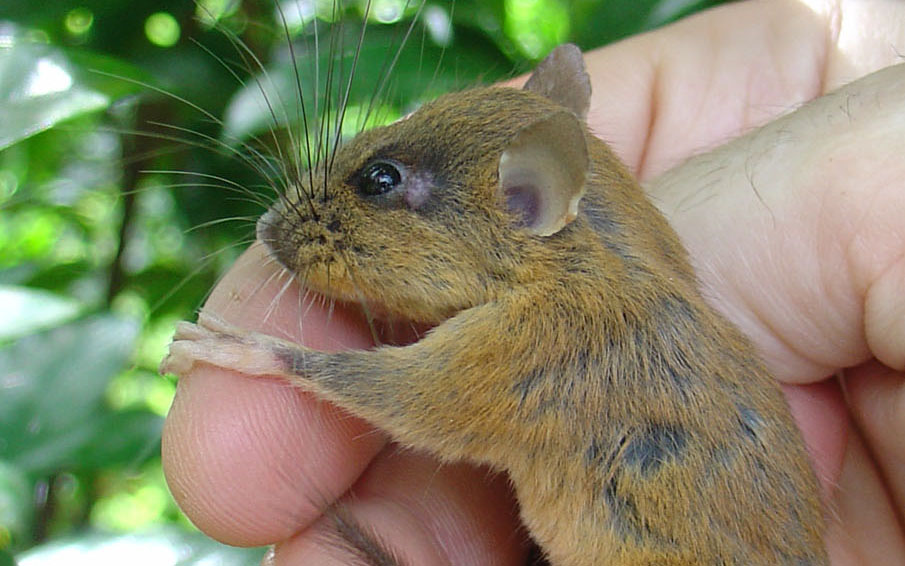- The team, made up of scientists from the United States and the Philippines, has just concluded a 15-year study on Luzon Island, during which they discovered 28 new species of mammals.
- The 28 new discoveries brought the total number of species of non-flying mammals that are now known to live on Luzon to 56.
- The researchers were able to determine that 52 of those species occur nowhere else in the world.
A team of researchers has concluded that, in addition to being the Philippines’ largest and most populous island, Luzon Island is also home to the greatest concentration of unique species of mammals in the world.
The team, made up of scientists from the United States and the Philippines, has just concluded a 15-year study on Luzon Island, during which they discovered 28 new species of mammals. The study’s results have been published in the journal Frontiers of Biogeography.
Among the newly encountered species are four tree-mice, tiny creatures with long whiskers that reach nearly to their ankles, as well as five species of mice that look like shrews and primarily feed on earthworms. Most of the new species live in tropical cloud forest high in the mountains, where frequent typhoons can drop four or five meters (12 to 15 feet) of rain per year.
“All 28 of the species we discovered during the project are members of two branches on the tree of life that are confined to the Philippines,” Eric Rickart, a member of the team who is based at the Natural History Museum of Utah, said in a statement.
“There are individual mountains on Luzon that have five species of mammals that live nowhere else. That’s more unique species on one mountain than live in any country in continental Europe. The concentration of unique biodiversity in the Philippines is really staggering.”

The 28 new discoveries brought the total number of species of non-flying mammals that are now known to live on Luzon to 56. The researchers were able to determine that 52 of those species occur nowhere else in the world. In other words, 93 percent of all of the land mammals found on Luzon are endemic to the island.
“We started our study on Luzon in 2000 because we knew at the time that most of the native mammal species on the island were unique to the island, and we wanted to understand why that is the case,” Lawrence Heaney, who is the Negaunee Curator of Mammals at The Field Museum in Chicago and the study’s lead author, said in a statement. “We did not expect that we would double the number already known.”
Heaney and his co-authors explain in the study that Luzon has never been connected to any continental land mass, meaning the species that live there have evolved in isolation, much like the wildlife of Hawaii. But Luzon is much older and, at about 40,000 square miles, much larger than the Hawaiian islands, meaning it has had a lot more time and space for species that arrived from the Asian mainland to evolve and diversify.

Also, Luzon’s mountainous terrain creates what scientists call “sky islands,” mountaintops that provide distinctive types of habitat. “The animals are isolated high on the scattered mountains, so they inevitably diverge. Given enough time, you begin to see huge biodiversity,” Heaney said.
The team also endeavored to learn more about the conservation status of the 57 species of bats that live on Luzon, such as the golden-crowned flying fox, one of the heaviest bats in the world at up to two and a half pounds, and the lesser flat-headed bat, which is so tiny that it can roost inside of bamboo stems.
Danny Balete, a research associate with The Field Museum who is based in the Philippines, noted that the country is one of the most heavily deforested in the tropics, and only about seven percent of the old-growth tropical forest remains. Several of Luzon’s bat species are seriously threatened by habitat loss and over-hunting, though none have yet gone extinct.
“Protecting all of these species from extinction is going to be a big challenge,” Balete said. “The good news is that when the native forest is allowed to regenerate, the native mammals move back in, and the pest rats get kicked out.”
Heaney added that learning about the diversity of mammal species on Luzon is crucial to the success of conservation efforts. “In order to be effective at conserving an environment, we have to know what’s out there.”
